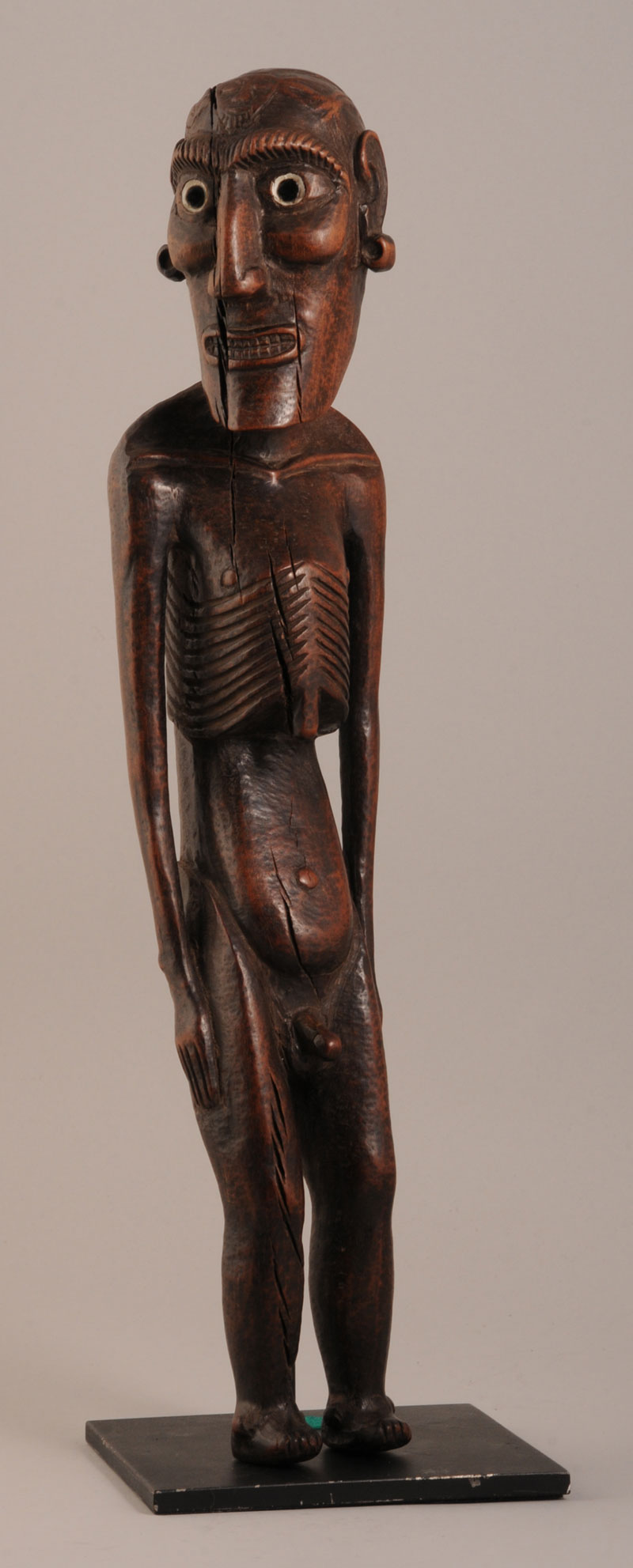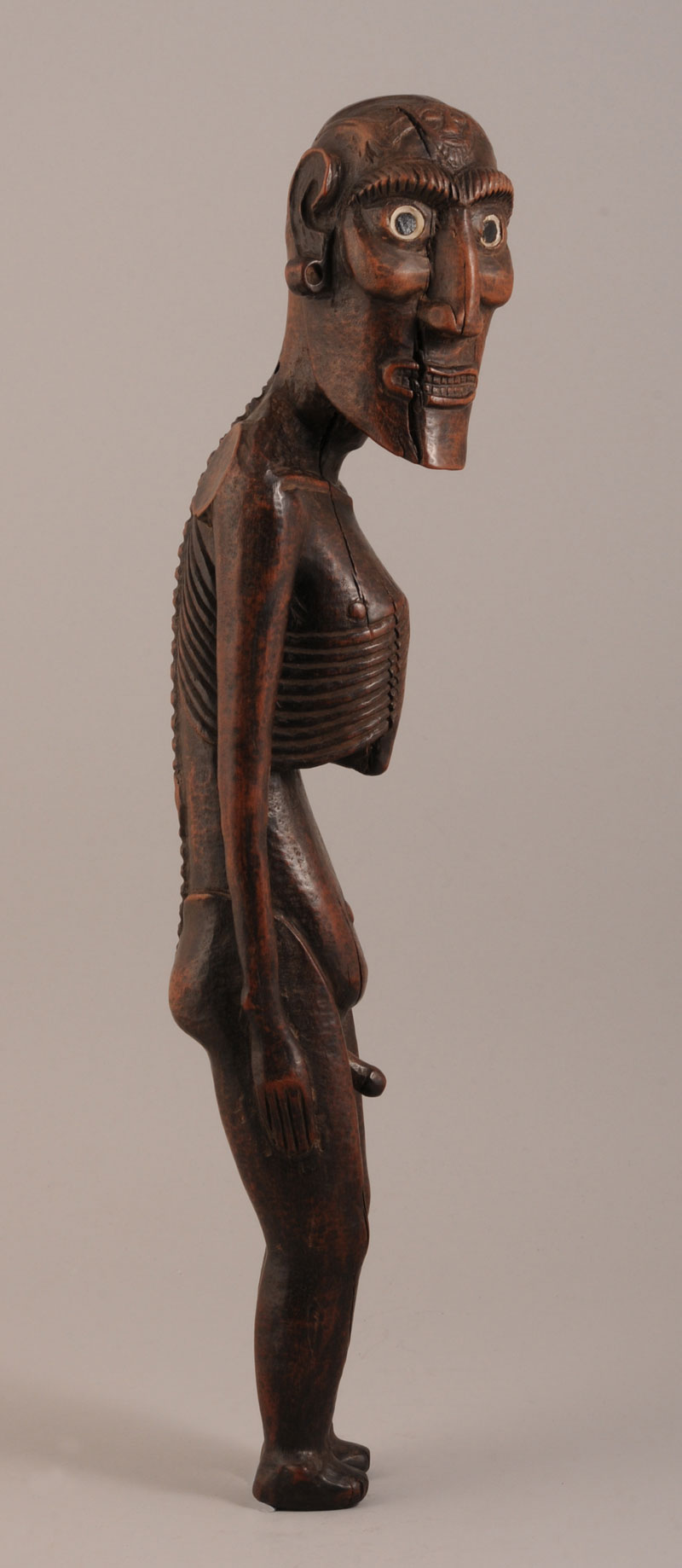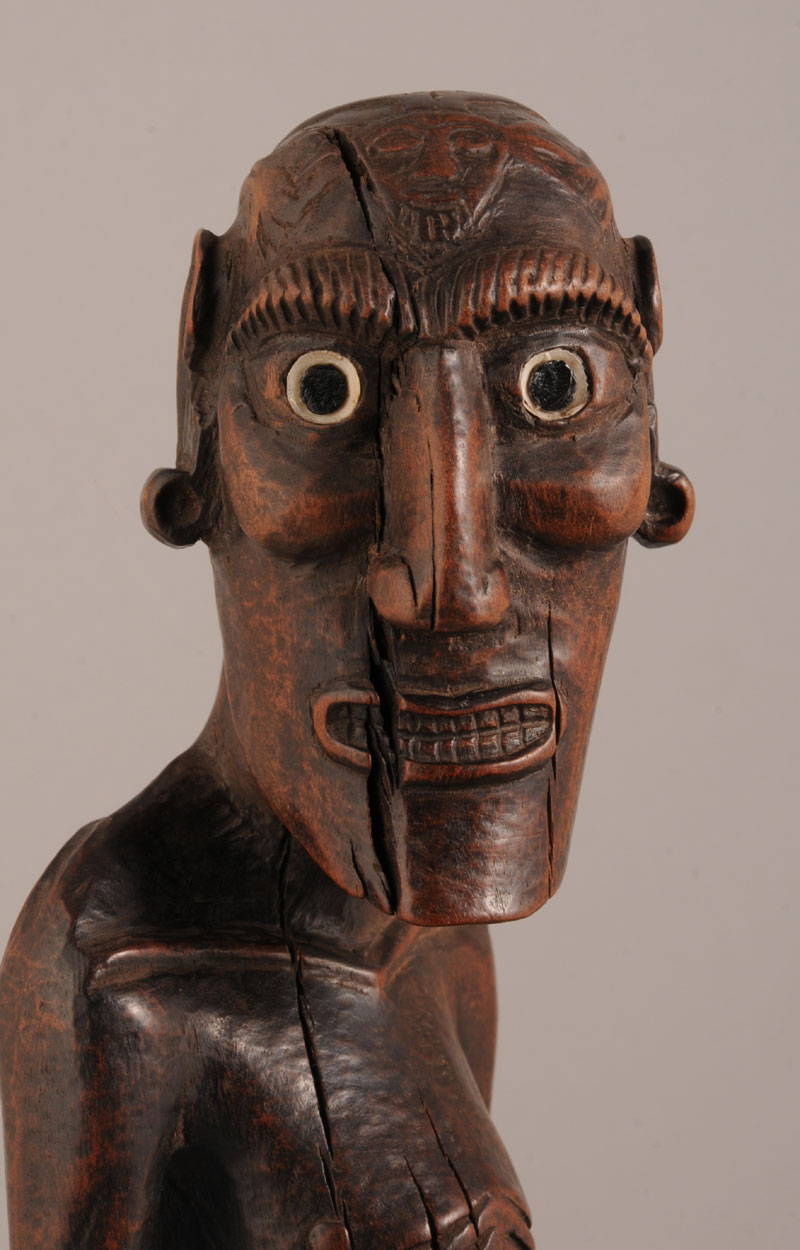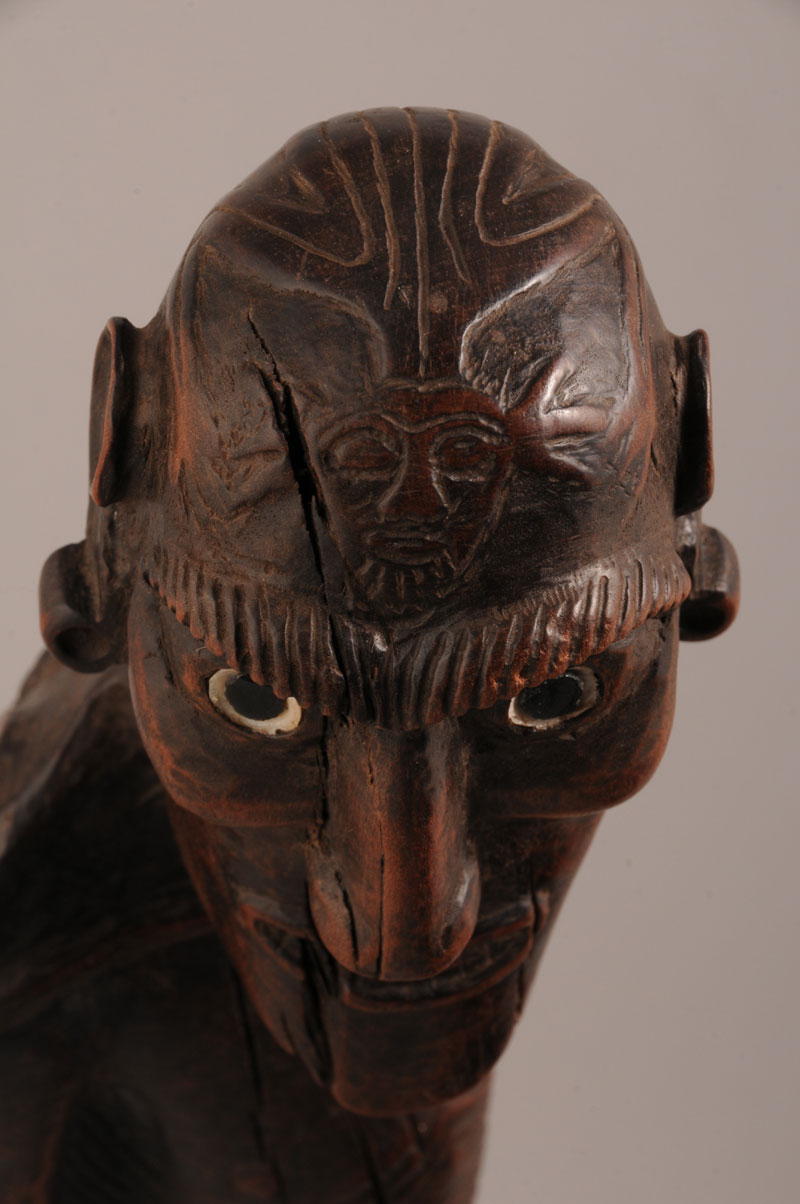TEST ITEM - An Easter Island figure, Moai Kavakava, circa 1870.
| Current Bid: | £4,100.00 |
| Bid Increment: | £100.00 |
| Next Min Bid: | £4,200.00 |
| Buyer’s Premium: | £984.00 |
| Total Amount: | £5,084.00 |
| Number of Bids: | 10 |
| Location: | United Kingdom |
| Highest Bidder: | User 1043 |
| Auction Start: | 24/09/19 00:00:00 UTC |
| Auction Ending: | 01/10/19 20:57:39 UTC |
| Auction Finished : | 01/10/19 20:58:36 UTC |
TEST ITEM - An Easter Island figure, Moai Kavakava, circa 1870.
An Easter Island figure, Moai Kavakava, probably 19th century.
the diminutive feet supporting slightly bent legs framing a penis, the elongated torso with incised ribs, the arms with hands resting on the thighs, the enlarged head turned to the right with square chin, smiling mouth showing teeth, hooked nose set between round eyes inlaid with white and black material, raised eyebrows and elongated ears. skull incised with a lizard man motif, the back pierced across the neck and showing raised vertebras; rich brown patina varying from light to dark brown.
Provenance: Private English Collection (no specific details are known to us about the exact provenance of this piece prior to its previous owner)
This figure belongs to a small group of 10 figures with turned head, collected between 1806 and 1894.
These are:
- Pigornini Museum, Rome, ACcesined in 1809
- Musee de L’homme, Paris, donated in 1894 ( n. 94.27.1)
- Muzej Istituta etnografii imeni, St petersbourghm donated in 1804 ( N. 736-203)
- Canterbury museum, Christschurch, New Zealand, from the oldman Colelction (N. 150.1129)
- Smithsonian Institution (n. 315748)
- Trocadero Museum, Paris : two pieces published in Chauvet (1935, fig 131 and 132)
- Flesheim Collection, Berlin
- Dapper Museum, Paris ( ex Sotheby's London, March 26, 1990, lot 39)
- Sotheby's New York, 16th Nov 2001, lot 273
Dating Easter Island figures has recently moved from the belief that better carved figures were older, to a different theory.
This theory has been brilliantly explained in the recent study of Easter Island Sculptures written by Mr and Mr Orliac for the Paris exhibition, “trésors de l’ile de Paque”, Galerie Louise Leiris, Paris, 2008
In this study, Mr and Mrs Orliac demonstrate that, contrarily to general belief, some pieces collected at the end of the 18th century are, less sophisticated in appearance, not in the famous Toromiro wood, and do not have a pierced loop at the back of the neck.
Instead, they separated the Moai Kavakava in two groups according to their size.
One group comprises larger figure (37 to 50.5 cm.), and includes most of the finest examples of Moai Kavakava
The other group includes figures which are smaller (23 to 35 cm.) and often ( but not always) less finely carved.
For Mr and Mrs Orliac, this distinction may be related to the fact that some of the “better” carved pieces were used for the higher echelons of the Pascuan society, while the figures belonging to the second group might has been ordered by and for the rest of the Easter Island population.
Therefore, according to the latest theory, our figure, which belongs to the first group, dates from the 19th century and has been made for the upper echelon of the Easter island society.
Sold without the stand (used for photographic purposes only)
| Size: | 38 cm. |
| Weight: | |
| Date: | |
| Condition: | interrupted crack running from right leg to head, eyes possibly restored, tip of the feet and penis broken and reglued |
| Estimate: | £4000 – 6000 |










